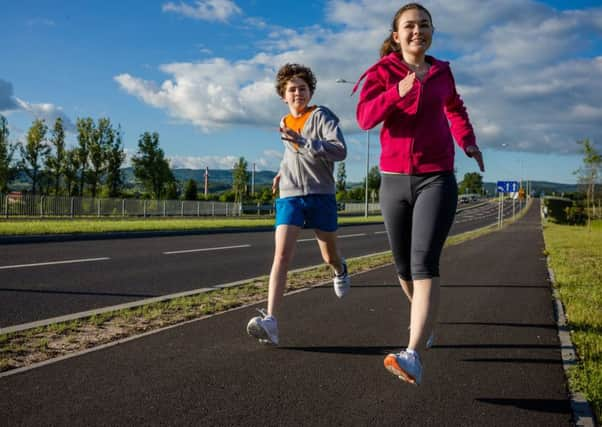Lack of exercise slows up learning


A study found young lads who get plenty of exercise flourish in the classroom and had better academic results, particularly in reading and maths.
But, interestingly, the same phenomenon was not found in girls.
Advertisement
Hide AdAdvertisement
Hide AdOther factors, including parental support and peer acceptance, may be more important for girls, said the researchers.
Exercise is said to help brain power by the flow boosting blood and oxygen.
It could also reduce stress and improve mood, making children more likely to behave during lessons.
The study of 153 Finnish six to eight year olds in Grade 1 to 3 of primary school compared amounts of physical activity and sedentary time with reading and arithmetic skills.
Advertisement
Hide AdAdvertisement
Hide AdA combination of high levels of moderate to vigorous physical activity and low levels of time sedentary time were related to better reading among boys from Grades 1 to 3.
They were also associated with better maths skills in Grade 1, reports the Journal of Science and Medicine and Sport.
Dr Eero Haapala, of the University of Eastern Finland, said: “Low levels of moderate to vigorous physical activity and high levels of sedentary time in Grade 1 were related to better reading skills in Grades 1 to 3 among boys.
“We also observed boys who had a combination of low levels of physical activity and high levels of sedentary time had the poorest reading skills through Grades 1 to 3.”
Advertisement
Hide AdAdvertisement
Hide AdPromoting a physically active lifestyle may kick start boys’ school performance.
The researchers said: “Physical inactivity is a major public health problem in developed countries.
“There is some evidence that higher levels of physical activity and lower levels of sedentary time are associated with better brain structures and functions in children.
“Moreover, low levels of physical activity and high levels of sedentary time, particularly TV watching, have been linked to poorer academic achievement in children.
Advertisement
Hide AdAdvertisement
Hide Ad“Physical activity and sedentary time likely have similar effects on the brain in girls and in boys, but other factors, such as parental educational support, peer acceptance, teachers’ positive attitude for the student, and children’s motivation towards school are more important correlates of academic achievement than physical activity and sedentary time among girls.
“More research is needed to investigate whether the associations of physical activity and sedentary time with academic skills are different in boys and girls.”
Previous research has shown half of all UK seven year olds do not do enough exercise, with girls far less active than boys.
The study of 6,500 children found just 51% achieved the recommended hour of physical activity each day. For girls, the figure was just 38%, compared with 63% for boys.
Half of the group also spent more than six hours being sedentary each day, although some of this would be spent in class.